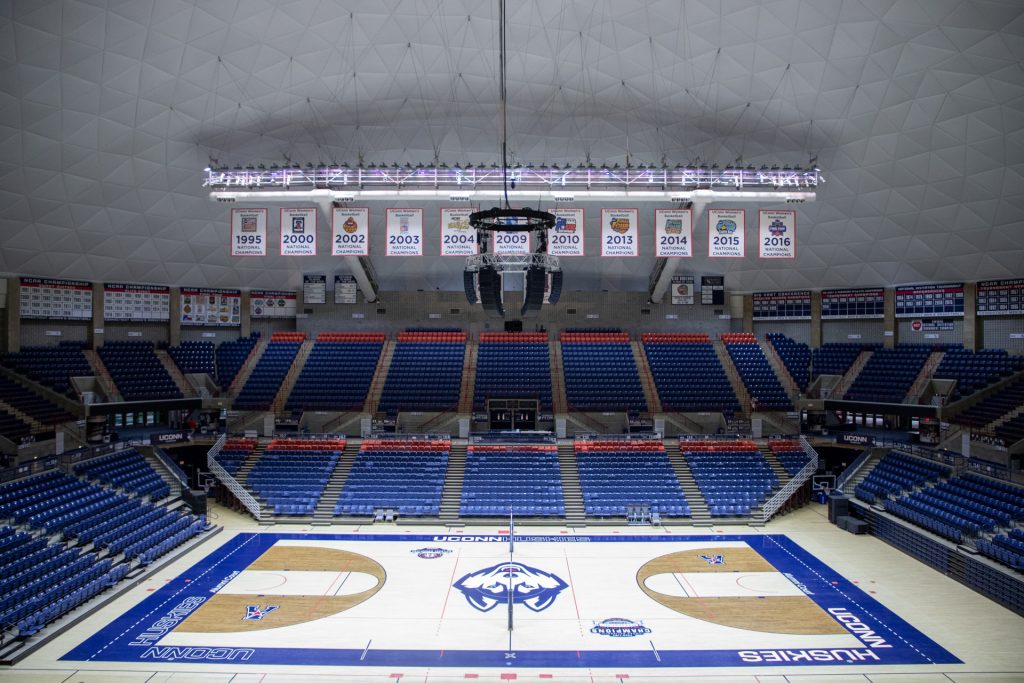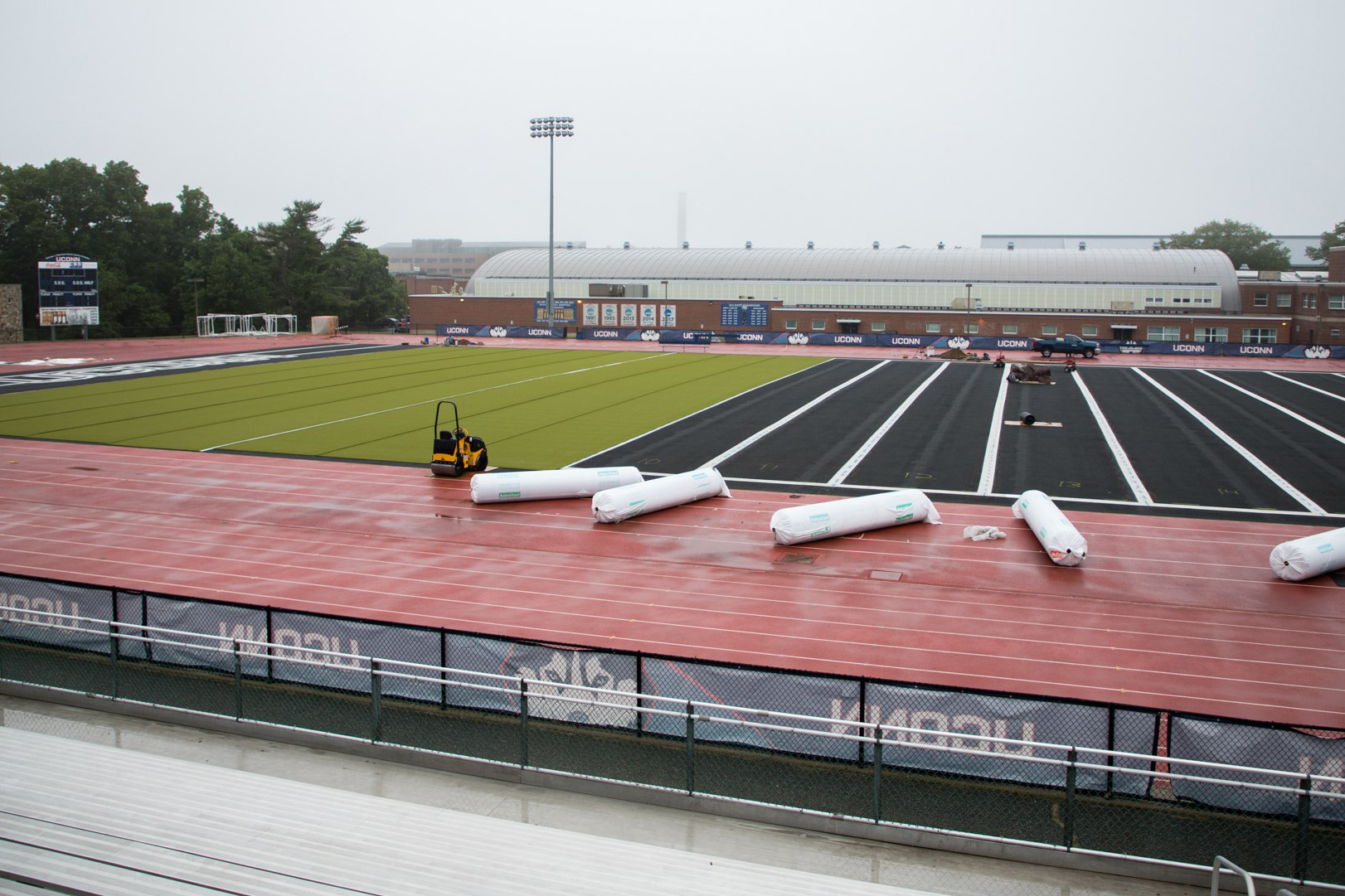At universities throughout the country, Graduation Day signals the end of the school year. At UConn, however, it also signals the beginning of construction season. Building projects on campus that would be near impossible with the student population at full capacity get under way quickly, in hopes of completion before the fall semester.
Every summer, heavy equipment and the accompanying road closures become part of the Storrs campus landscape, including the athletic facilities, and the summer of 2019 is no different – except that there is more of it than ever.
From the massive project of the new Elliot Ball Park baseball facility to better overhead lighting in the Shenkman Center, there are facelifts happening all over UConn Athletics.
“It’s not a normal summer – it’s been a whole lot busier than normal,” says Evan Feinglass, associate athletics director for facilities management and planning.

Two of the projects with the earliest completion dates are certain to upgrade the game day experience for fans and student-athletes at Gampel Pavilion and the Sherman Family Sports Complex.
A completely new audio system has been installed at Gampel Pavilion for the first time in 30 years, meaning public address announcements, game day music, and video board audio will have state-of-the-art clarity and crispness.
“Most of the system that was there was original to the building, which dates back to 1990,” says Feinglass. “Some of the components were no longer functioning, and the way that the game day experience has changed – in terms of the music and other things going on during breaks and timeouts – are much different now than when we were playing in 1990.
“There will be a noticeable difference in the clarity and quality of the sound,” he adds. “It’s like having an old Sony Walkman with the earphones and replacing it with a Bose SoundLink. Like night and day.”
Working with HB Communications, Bose, and Ambient Sound, UConn installed a new Bose system at a cost of about $500,000, funded by the University.
“We do a lot of other events in Gampel – commencement ceremonies, Invention Convention, career fairs, open houses – and at a lot of those events, because of the sound system we had, they were forced to bring in their own sound systems to help,” Feinglass says. “For the events where there is more speaking, or background music, it will make it much easier and more friendly for them.”
Installation of the new sound system involved the construction of scaffolding in the middle of the Gampel Pavilion floor, built high enough to reach the old system. That will not be necessary in the future.
“The other big difference is, with the system that had been in here, there was no way for us to get up there to fix it without building scaffolding,” Feinglass says. “With the new system, like in most arenas, you can lower the center cluster to the ground and work on it when you need to. Plus, because the new components are so much lighter, the weight we took off, we were able to make up for with more pieces.”
At the Sherman Complex, the five-time national champion UConn field hockey team, as well as women’s lacrosse, and numerous university recreational programs will be playing on new turf, which should be fully installed in about two weeks. University funding helped out with this project as well. The last time the field was upgraded was with an AstroTurf 12 surface in 2008. The new turf is called Poligras.
“The life span of the AstroTurf is about eight to 10 years, so we were due,” says Feinglass. “The new field is what international fields have, and what many schools are going to. AstroTurf was phasing out the old surface anyway, because of the push to go green. This is much less abrasive and much more durable. Our coaches have played on similar fields elsewhere and they are very pleased that we will have it.”
The Poligras is a polyethylene fiber that retains water while still allowing for drainage. It is the same surface that was used for the Olympic fields in Rio in 2016, and will also be used for the Tokyo Olympics in 2020.
“It will completely change our irrigation system,” Feinglass explains. “We had six irrigation heads that we used to water the field, which was a manual process. You had to put the heads in, then there’s a big key you had to turn on, so you could water one side, then turn it off, go back and water the other side. This system is like what you would see at a golf course or an underground sprinkler system at your house – the heads will pop up and you can turn on the water from a remote device. It’s a lot less labor-intensive when it comes to watering the field.”
Two projects done, plenty of others in progress. After all, it is summer in Storrs.



